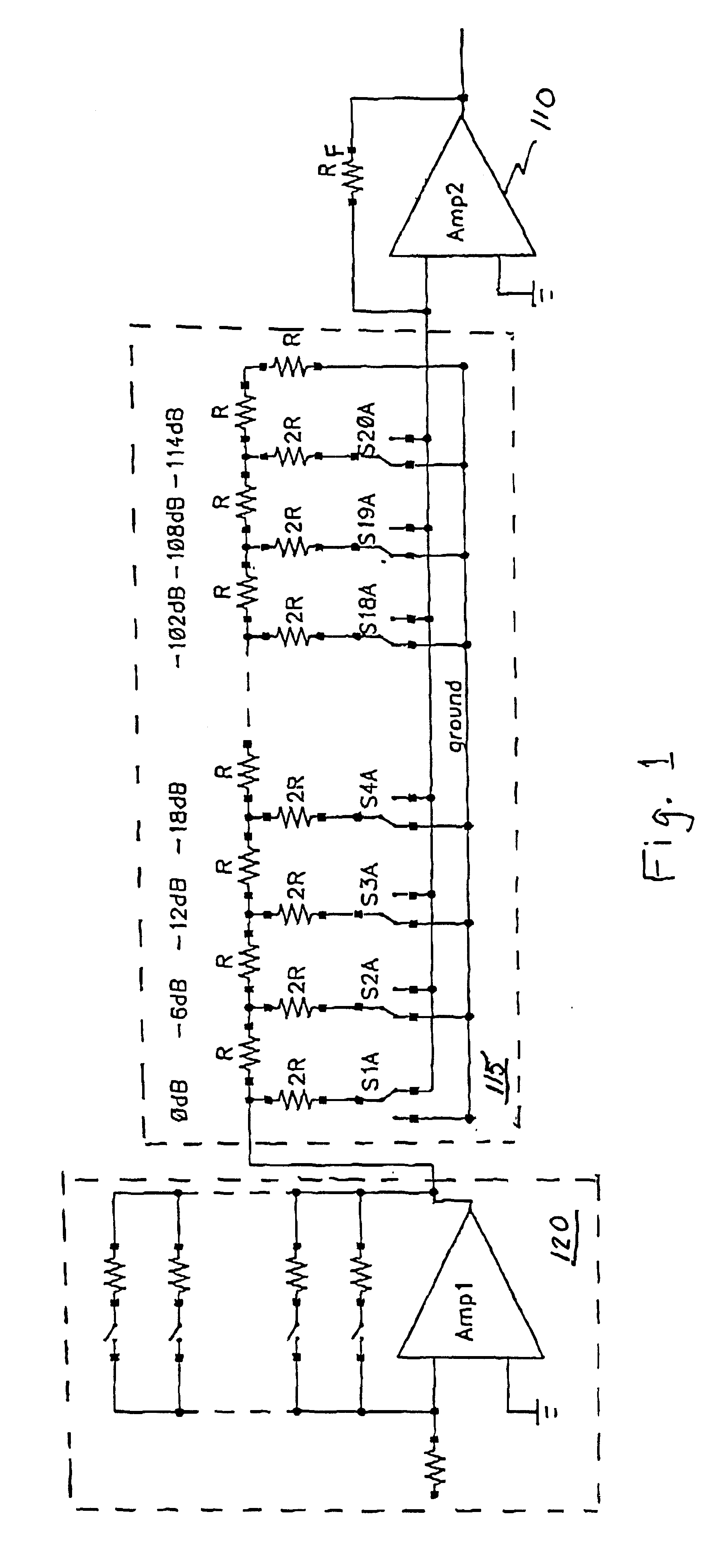Method and apparatus for controlling an audio signal level
a technology of audio signal and level, applied in the direction of gain control, code conversion, instruments, etc., can solve the problems of degrading audio signals, difficult to inexpensively manufacture pots, and difficult to achieve low-volume settings
- Summary
- Abstract
- Description
- Claims
- Application Information
AI Technical Summary
Problems solved by technology
Method used
Image
Examples
Embodiment Construction
Methods and apparatus for controlling a signal level are described in U.S. patent application Ser. No. 09 / 156,262 for METHOD AND APPARATUS FOR CONTROLLING AN AUDIO SIGNAL INPUT LEVEL filed on Sep. 18, 1998, the entire disclosure of which is incorporated herein by reference for all purposes. In a specific embodiment described in that application, the invention provides a volume control circuit with a large dynamic range, cheaply implemented, with low noise based on an R-2R network. FIG. 1 shows an example of such an implementation.
The circuit of FIG. 1 takes advantage of the logarithmic characteristic of the R-2R resistor network topology to precisely attenuate an incoming analog audio signal in 6 dB steps for any number of channels. The 2R resistors are selectively switched between ground and the virtual ground represented by the input of an operational amplifier 110 following the R-2R network 115. Because the operation of the network is essentially independent of the base resistor ...
PUM
 Login to View More
Login to View More Abstract
Description
Claims
Application Information
 Login to View More
Login to View More - R&D
- Intellectual Property
- Life Sciences
- Materials
- Tech Scout
- Unparalleled Data Quality
- Higher Quality Content
- 60% Fewer Hallucinations
Browse by: Latest US Patents, China's latest patents, Technical Efficacy Thesaurus, Application Domain, Technology Topic, Popular Technical Reports.
© 2025 PatSnap. All rights reserved.Legal|Privacy policy|Modern Slavery Act Transparency Statement|Sitemap|About US| Contact US: help@patsnap.com



